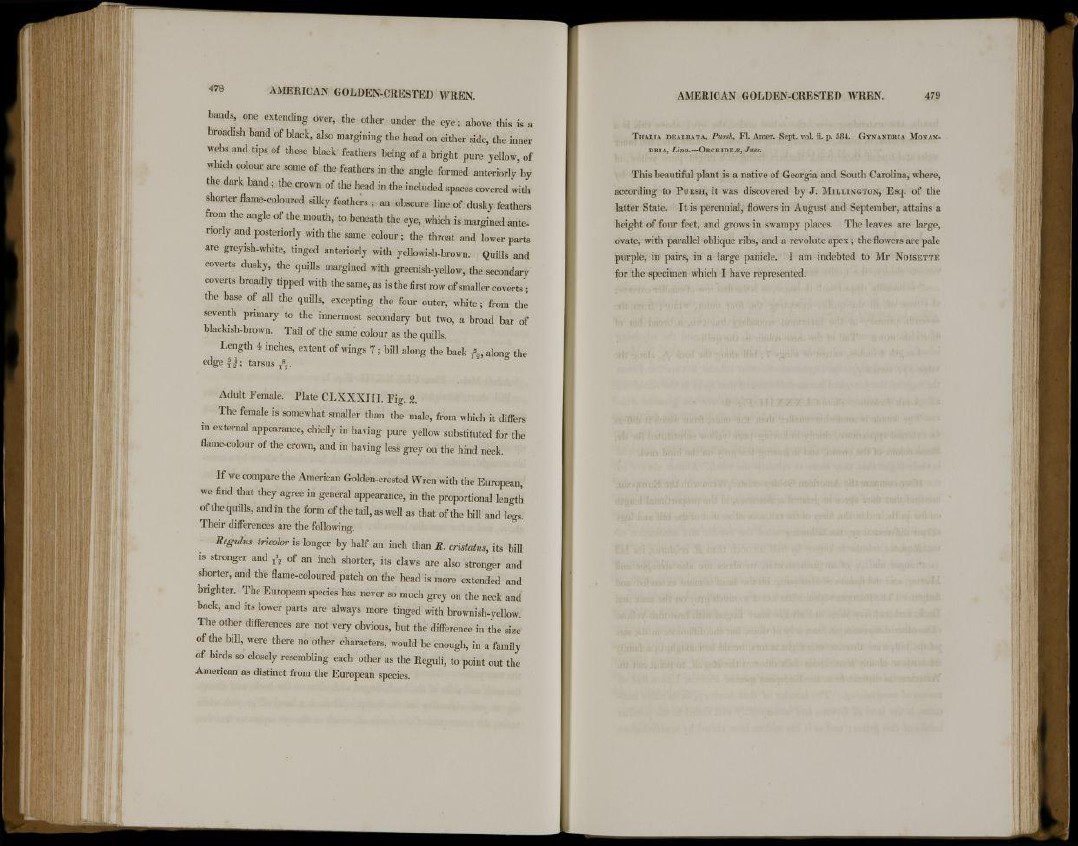
478 AMERICAN GOLDEN-CRESTED WREN.
bands, one extending over, the other under the eye; above this is a
broadish band of black, also margining the head on either side, the inner
webs and tips of these black feathers being of a bright pure yellow, of
which colour are some of the feathers in the angle formed anteriorly by
the dark band ; the crown of the head in the included spaces covered with
shorter flame-coloured silky feathers ; an obscure line of dusky feathers
from the angle of the mouth, to beneath the eye, which is margined anteriorly
and posteriorly with the same colour; the throat and lower parts
are greyish-white, tinged anteriorly with yellowish-brown. Quills and
coverts dusky, the quills margined with greenish-yellow, the secondary
coverts broadly tipped with the same, as is the first row of smaller coverts ;
the base of all the quills, excepting the four outer, white ; from the
seventh primary to the innermost secondary but two, a broad bar of
blackish-brown. Tail of the same colour as the quills.
Length 4 inches, extent of wings 7; bill along the back T
3
2 , along the
edge f-J; tarsus/ 2 .
Adult Female. Plate CLXXXIII. Fig. 2.
The female is somewhat smaller than the male, from which it differs
in external appearance, chiefly in having pure yellow substituted for the
flame-colour of the crown, and in having less grey on the hind neck.
If we compare the American Golden-crested Wren with the European,
we find that they agree in general appearance, in the proportional length
of the quills, and in the form of the tail, as well as that of the bill and legs.
Their differences are the following.
Regulus tricolor is longer by half an inch than R. cristatus. its bill
is stronger and T
]
? of an inch shorter, its claws are also stronger and
shorter, and the flame-coloured patch on the head is more extended and
brighter. The European species has never so much grey on the neck and
back, and its lower parts are always more tinged with brownish-yellow.
The other differences are not very obvious, but the difference in the size
of the bill, were there no other characters, would be enough, in a family
of birds so closely resembling each other as the Reguli, to point out the
American as distinct from the European species.
AMERICAN GOLDEN-CRESTED WREN. 479
THALIA DEALBATA, Pursh, Fl. Amer. Sept. vol. ii. p. 584. GYNANDRIA MONAKDRIA,
Linn.—ORCHIDEJE, JUSS.
This beautiful plant is a native of Georgia and South Carolina, where,
according to PURSH, it was discovered by J . MILLINGTON, Esq. of the
latter State. It is perennial, flowers in August and September, attains a
height of four feet, and grows in swampy places. The leaves are large,
ovate, with parallel oblique ribs, and a revolute apex; the flowers are pale
purple, in pairs, in a large panicle. I am indebted to Mr NOISETTE
for the specimen which I have represented.